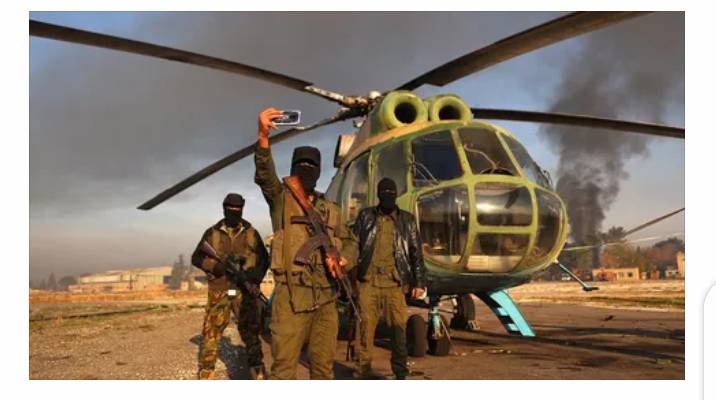The Syria Tinderbox: How US, Russian, and Turkish Forces Are on the Brink of a New Offensive
The geopolitical landscape of Syria remains a complex and volatile web, with American, Russian, and Turkish forces stationed in dangerously close proximity. As tensions escalate, the likelihood of a bloody new offensive grows, threatening to ignite another humanitarian crisis, displace millions of civilians, and potentially destabilize President Bashar al-Assad’s regime.
The Powder Keg in Northern Syria
Northern Syria has long been a hotspot for conflict, with multiple factions vying for control over the region. The area is a tapestry of Kurdish fighters, Syrian government troops, rebel forces, and the interests of major international players. Despite recent efforts at de-escalation, the situation remains fragile, with localized skirmishes threatening to spiral into full-scale confrontations.
Turkey, in particular, views the presence of Kurdish militias near its border as an existential threat. Ankara has been clear about its intentions to launch further military operations to push back the Syrian Democratic Forces (SDF), led by Kurdish fighters. This determination puts it on a collision course with the United States, which backs the SDF as a key ally in the fight against ISIS.
Adding to the complexity, Russia’s presence in Syria bolsters the Assad regime, providing critical military and logistical support. Moscow's growing influence in the region has led to uneasy encounters with both Turkish and American forces, raising the risk of accidental clashes or deliberate provocations.
A Brewing Humanitarian Crisis
A new offensive in Syria would undoubtedly trigger another mass exodus of refugees, compounding the humanitarian disaster that has plagued the region for over a decade. Millions of Syrians remain displaced, with many living in overcrowded camps in neighboring countries such as Turkey, Lebanon, and Jordan. These nations, already stretched thin, are warning of dire consequences should a new wave of migrants arrive.
The European Union, too, fears the ramifications of another migrant crisis, which could strain political stability and fuel anti-immigration sentiment across the continent. With winter approaching, displaced families would face harsh conditions, lacking adequate shelter, food, and medical supplies.
The Future of Assad's Regime
While President Bashar al-Assad has managed to maintain power throughout Syria's civil war, his hold on the country is far from secure. A new conflict could weaken his position, particularly if it disrupts Russian support or emboldens opposition forces.
Assad’s government is already grappling with economic collapse, widespread poverty, and international isolation. A fresh wave of violence would likely exacerbate these issues, threatening to erode the remnants of his authority.
The Role of International Diplomacy
Despite the stakes, international diplomatic efforts have largely faltered. The United States, Russia, and Turkey each have divergent goals in Syria, complicating the path to peace. The UN has repeatedly called for restraint and a renewed commitment to negotiations, but its appeals have often been overshadowed by competing interests on the ground.
The recent uptick in military activity underscores the urgent need for de-escalation. Without a coordinated effort to address underlying tensions, Syria risks descending into a new phase of chaos, with devastating consequences for its people and the broader region.
Conclusion
The tinderbox that is Syria stands as a stark reminder of the perils of unresolved conflict. As US, Russian, and Turkish forces edge closer to direct confrontation, the stakes are higher than ever. The international community must act swiftly to prevent a catastrophic escalation, for the cost of inaction could be far greater than the world is prepared to bear.


